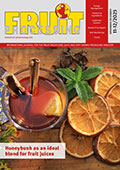Brazilian exports revenue can hit a record
The increasing demand from the European Union for fresh fruits might be an opportunity for the revenue obtained with Brazilian exportations to be a record in 2019. Cepea’s Hortifruti Brasil magazine evaluates how is the European market for eight fruits (banana, tahiti lime, apple, papaya, mango, melon, watermelon and grape) and explores opportunities to increase […]

The increasing demand from the European Union for fresh fruits might be an opportunity for the revenue obtained with Brazilian exportations to be a record in 2019. Cepea’s Hortifruti Brasil magazine evaluates how is the European market for eight fruits (banana, tahiti lime, apple, papaya, mango, melon, watermelon and grape) and explores opportunities to increase shipments to the EU or, at least, keep Brazilian participation in purchases of the bloc. In order to perform this, Hortifruti Brasil compared importation data outside the bloc from European Commission (through Trade Helpdesk data) in 2006, 2011 and 2016 and surveyed Brazilian exporters and verified data from other countries.
In 2017, Hortifruti Brasil estimates indicate that the revenue obtained with shipments might total 662.02 million dollars. Abrafrutas (Brazilian Fruit Growers-Exporters Association) says that Brazil might reach the goal of 1 billion dollars revenue with exportations in 2019. According to the Association, the strategy to reach this amount, in short-term, is to increase sales to solidified purchasing countries – however, the opening of new markets is also very important.
Among fruits presented in Hortifruti Brasil, mango (considered exotic not so long ago and more and more popular in the European retail market) can be highlighted. For more than one decade, Brazil continues as a major fruit supplier to the EU. The Brazilian melon increased its participation in the total that the bloc purchased outside EU (47 % in 2016 compared to 39 % in 2011). On the average of the last five years (2012-2016), between 70 % and 80 % of the volume produced by Rio Grande do Norte/Ceará) was sent to the international market, and 94 % of the amount was allocated to the European Union, according to Secex.
Watermelon exportations have also been registering a great performance, with a record in 2016/17. The Brazilian participation in the shipments to the European Union increased over the last 10 years, changing from 16.8 % to 21.4 % in 2016. There are still challenges for Brazil to consolidate its participation in sales to the EU and finally reach the goal, such as tariff barriers, quality improvements, production diversification and search for new purchasers.









